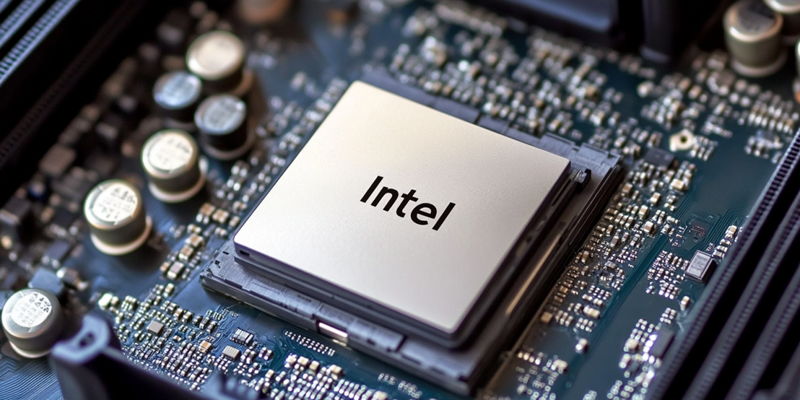The excitement surrounding Intel’s latest developments in the CPU market reached new heights with a recent leak revealing the performance capabilities of the upcoming Intel Core Ultra 5 245K Arrow Lake desktop processor. As benchmarked in CPU-Z, this new processor has showcased impressive performance metrics, scoring 850.6 points in single-core performance and an astounding 10,907.1 points in multi-core performance. These results position it remarkably close to Intel’s Core i9-13980HX in single-core performance, while it marginally trails behind the Core i5-14600K/KF. However, in multi-core tests, the 245K outshines the 14600K/KF by approximately 10.5%, achieving around 90% of the performance observed in the higher-end Intel Core i7-14700K.
Benchmark Highlights: Single-Core and Multi-Core Performance
The benchmark scores of the Core Ultra 5 245K suggest that Intel has made significant strides in efficiency and power management. With a single-core performance score of 850.6 points, the processor finds itself in the sweet spot between existing high-performers like the Core i9-13980HX and the Core i5-14600K/KF. This showcases its potential for applications and tasks that thrive on single-core performance, like gaming and certain productivity applications.
On the multi-core front, the 245K’s results are even more astonishing. Achieving a score of 10,907.1 points in multi-core performance tests, it surpasses the Core i5-14600K/KF by a notable margin of 10.5%. Considering that multi-core performance is crucial for tasks such as video editing, 3D rendering, and multitasking, this positions the 245K as a formidable contender in the mid-to-high-end CPU market. Interestingly, the 245K’s multi-core performance approaches 90% of that observed in the higher-end Intel Core i7-14700K, indicating that it packs substantial power despite its mid-range positioning.
Strategic Decision to Forego Hyperthreading
One of the most critical revelations about the Core Ultra 5 245K is Intel’s bold decision to exclude hyperthreading in its design. Traditionally, hyperthreading has been Intel’s method for allowing each core in a CPU to handle more than one thread simultaneously, thereby boosting computational efficiency. However, the results from the 245K processor challenge the long-held belief in the necessity of hyperthreading. With 14 threads, the processor still delivers impressive performance, effectively competing with other chips that feature between 20 to 28 threads.
Intel’s decision to forego hyperthreading in favor of other optimizations appears to have paid off handsomely. The processor operates at a maximum of 159 watts, making it more power-efficient compared to the Core i5-14600K, which consumes up to 181 watts. This step towards enhanced power efficiency without compromising performance could signify Intel’s new trajectory in CPU design philosophy. The reported efficiency of the 245K suggests that Intel is onto a winning formula, balancing power consumption and performance in a way that meets the demands of a diverse user base.
Caution with Preliminary Benchmarks
While the performance benchmarks of the Core Ultra 5 245K are promising, it’s essential to approach these early results with caution. The processor is in the final stages of development, and further optimizations are likely. Notably, the tested 245K processor operated at a frequency 100 to 200 MHz lower than the anticipated standard, implying that the final release version might exhibit even higher scores once it hits the market. As Intel nears the official release, refinements in the processor’s architecture and functionality could enhance its already impressive performance metrics.
This aspect highlights the importance of evaluating early benchmarks within the context of ongoing development. Performance metrics can fluctuate based on firmware updates, minor adjustments in core architecture, and even revisions in manufacturing processes. Nonetheless, the current benchmarks offer a tantalizing glimpse into the capabilities of the 245K, setting high expectations for its official launch.
Reevaluating the Role of Hyperthreading
The elimination of hyperthreading in the Core Ultra 5 245K invites a broader discussion on its necessity and efficacy in modern CPUs. Intel has long leveraged hyperthreading as a key feature to maximize core usage and enhance computational throughput. Yet, the 245K’s performance, even without this feature, raises questions about its continued relevance. The Arrow Lake series illustrates that significant efficiency and power gains can be achieved by focusing on other areas of CPU design and optimization.
Intel’s approach with the Arrow Lake series may signal a shift in their broader product strategy. By reevaluating the role of hyperthreading, Intel could influence the trajectory of processor development industry-wide. As CPUs become more efficient and power-conscious, other manufacturers may follow suit, reevaluating the trade-offs associated with hyperthreading and seeking alternative methods to boost performance.
Implications for Future Intel Processors
Intel enthusiasts are buzzing about the company’s latest advancements in the CPU market, thanks to a recent leak showcasing the performance of the upcoming Intel Core Ultra 5 245K Arrow Lake desktop processor. This new chip, tested in CPU-Z, demonstrated notable performance, scoring 850.6 points in single-core performance and an impressive 10,907.1 points in multi-core performance. Such results place it near Intel’s Core i9-13980HX in single-core performance, although it slightly lags behind the Core i5-14600K/KF. However, the 245K shines in multi-core benchmarks, outperforming the 14600K/KF by about 10.5% and achieving roughly 90% of the performance seen in the higher-end Intel Core i7-14700K. These benchmarks suggest that the Intel Core Ultra 5 245K Arrow Lake could be a game-changer in the mid-range CPU segment, offering a balance of performance and efficiency. With such capabilities, it is poised to attract gamers, developers, and tech enthusiasts looking for robust performance without breaking the bank.

